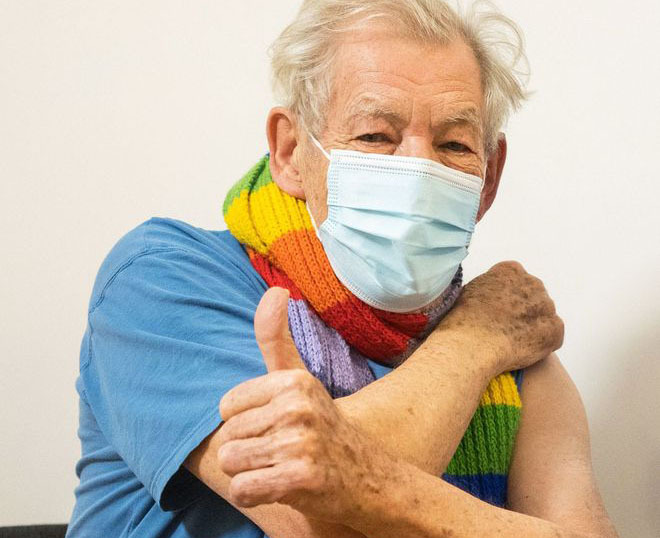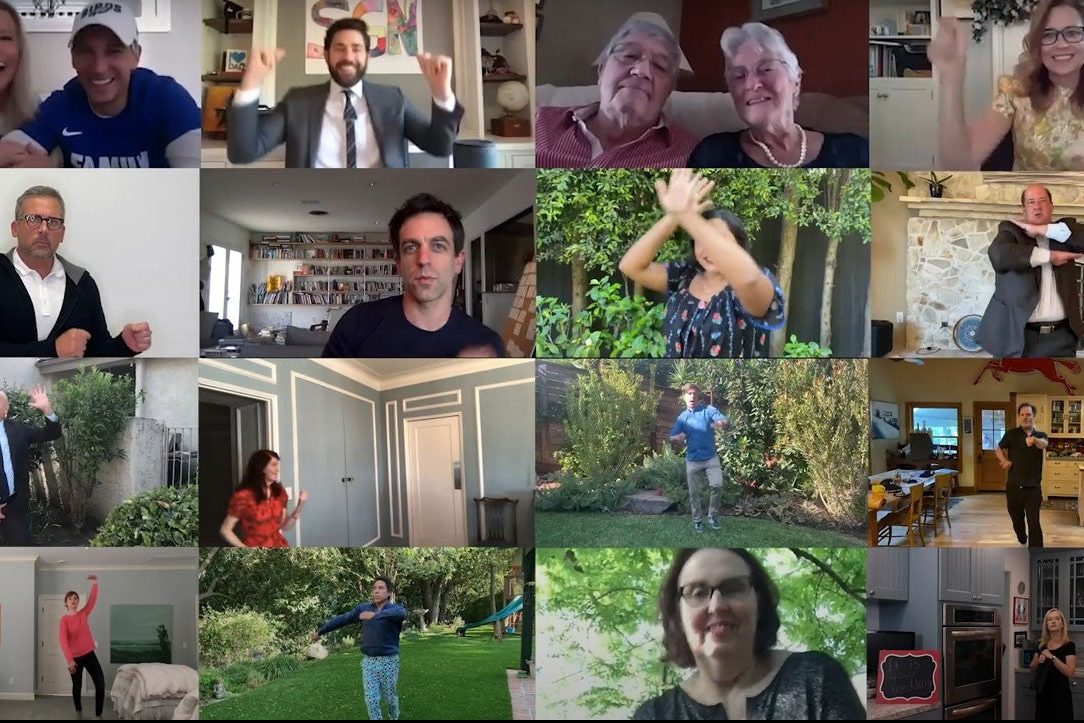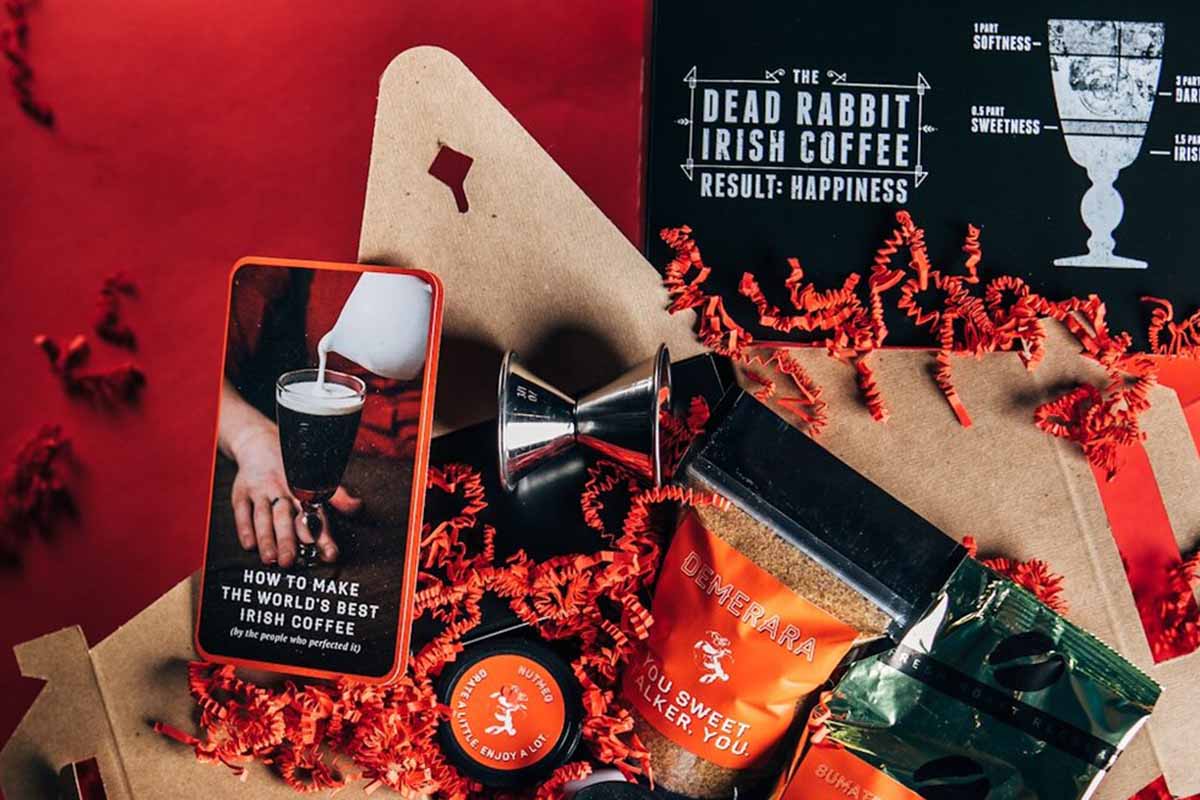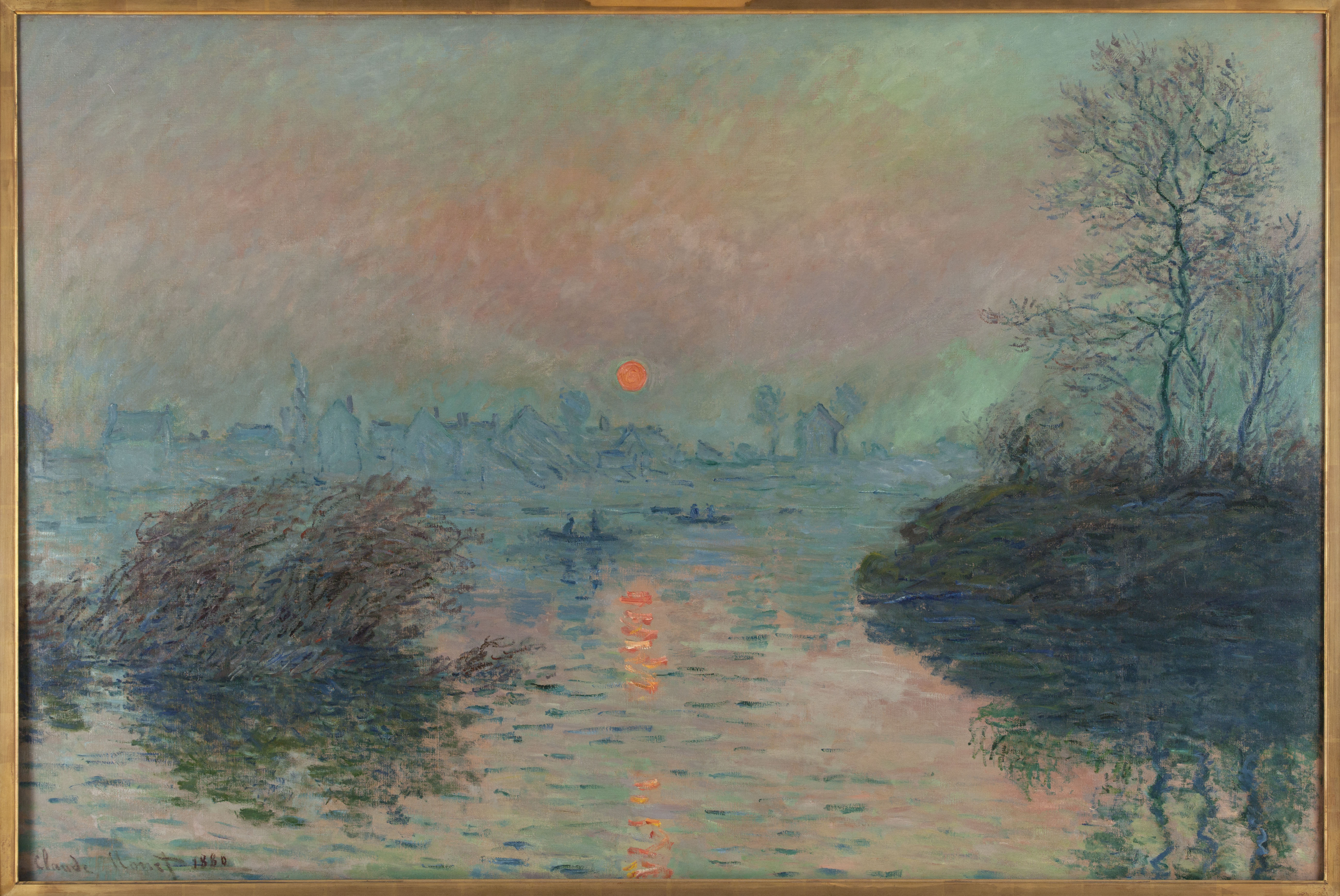
We make this list every year. Our goal, on some level, is to return to it 365 days later and tally all the things we got right and wrong, hoping that the former outnumber the latter. And they usually do: we don’t employ clairvoyants, but we do employ very smart and talented editors who consume more than their recommended daily intake of media every day, and they tend to see trends coming a little earlier than most.
One defining trend that we failed to predict in last year’s edition, though, was the arrival of a global pandemic that would cause the entire world to grind to a halt and render at least half of our predictions null and void.
Of course, that’s not the only troubling development that made 2020 a watershed year. Racial tensions erupted into a summer of protests around the country after yet another fatal episode of police violence against an unarmed Black man; severe wildfires ravaged communities in Australia, and later, the American West; a historically contentious presidential election led to unprecedented voter turnout and a surreal response from the incumbent president, who as of this week was still contesting the incontrovertible results spelling his demise; and the Cleveland Browns made the playoffs.
But it was the pandemic that unmoored nearly every aspect of our lives, regardless of caste, creed or color. It changed the ways we work, the ways we socialize, the ways we travel, the ways we eat, the ways we exercise, the ways we … do pretty much everything.
So as we look forward to our predictions for 2021, the legacy of 2020 will be evident throughout. New technologies, institutions and processes have not only arrived, but thrived, and many of them will live long beyond the ominous circumstances that bore them. In a weird way, 2020 may ultimately prove to be a year that — out of pure necessity — helped usher in critical, long-overdue changes for a number of industries and institutions.
Or at least that’s how we’re choosing to look at it, for today, at least. Because that’s the other goal of this list: optimism. Below, our 21 predictions for the trends that will define the lives of American men in 2020. May the odds be ever in our collective favor.
-Walker Loetscher, Editor in Chief

That’s vaccinated Sir Ian Mckellen to you
NHS/Twitter
The Vaccine Selfie Is Gonna Be Huge
The relationship between social media and the COVID-19 pandemic was a bit tumultuous in 2020. Many were using Twitter, Instagram, TikTok and Facebook to flaunt their WFH fits and share memes from the comfort of their isolation bubbles, while others just sort of … showed off all the fun, trendy places and parties they continued to attend, despite the whole deadly pandemic thing. We watched influencers and celebrities fly out to Wyoming to ride horses amid all the CDC travel guidelines they assured us they followed prior to jetting off on their extravagant vacations. We will, undoubtedly, see more of this in 2021, but another corona-adjacent post with a slightly less reprehensible vibe will be all over your feeds as the year progresses: The vaccine selfie (also dubbed the “vaxxie”). If you follow healthcare workers, or Sir Ian McKellen, you’ve already gotten a taste for the selfies yourself. They resemble the ubiquitous “I voted” selfies that come every election cycle and sometimes even include an “I got vaccinated” sticker. Ideally, the vaxxie will help instill public confidence in the vaccine as it starts to roll out to the general public, but it’s likely to come with its own vexations, as it’s probable we’ll have to watch celebs, athletes, influencers and the affluent post their vaxxies before the rest of us can. –Logan Mahan, Assistant Editor
Even With a Vaccine, Music Festivals Won’t Return Just Yet
We’ve all been eagerly awaiting the COVID-19 vaccine for what feels like forever to put an end to this horrific pandemic once and for all, but those in the music industry who have been financially devastated by the virus have been watching extra closely. That’s because the general understanding is that a safe return to live music as we know it is virtually impossible until a vaccine is readily available to the general public. But even if everyone gets vaccinated and we achieve herd immunity by the end of spring or summer — something that seems within the realm of possibility — 2021 touring schedules will still likely be pretty sparse. That’s because while regular concerts and one-off gigs could return relatively quickly after things start to return to normal, music festivals likely won’t come back until 2022. Festivals require much more lead time to put together than a normal show, and the majority of them traditionally take place over the summer, meaning there’s not sufficient time to wait around and see where we’re at pandemic-wise before deciding whether to cancel or go ahead with the months of expensive planning and preparation. Some summer festivals, like Bonnaroo, have postponed to September, but at this point, even that feels pretty optimistic. If, for example, the vaccine rolls out slower than expected, herd immunity could still be a big question mark by the time fests that are slated to take place in the fall need to start putting together lineups, booking travel and lodging, locking in venues, paying vendors and — most importantly — selling tickets. More likely than not, that uncertainty will force them to wait until the following year, when COVID-19 will (hopefully) be a fading memory. –Bonnie Stiernberg, Senior Editor
Comfy Clothes Will Breach the Final Frontier: Your Office
It’s not as though the world of “crossover” menswear (see: traditional silhouettes like polos, button-ups and chinos churched up with fabrics and tech from the athleisure sphere) wasn’t enjoying a pretty meteoric rise already prior to 2020. However, a year spent largely indoors has given the category the equivalent of a Fast & Furious NOS boost, paving the way for a sartorial future in which the stretchy, moisture-wicking wares of brands like Rhone, Willy California and State of Matter are the rule rather than the exception. The vestiary pendulum swung deep into comfort (see: sweats) territory early in the year as we all acclimated to quarantine and working from home — and while there was always to be an inevitable course correction back toward “getting dressed” again, the smart money says that even when gents head back to the office (in and of itself a big question mark, but that’s someone else’s prediction to make), they’ll be prioritizing comfort and versatility over outright style in a way we haven’t seen before (even in their footwear). The big concern here is that this could lead to a rather homogenous and boring sartorial landscape, as the big knock on the crossover category tends to be that the brands … all kinda look alike. Our hope? That larger, more established menswear houses take the hint from the upstarts and start applying similar tech in conjunction with their formidable design acumen, thus ushering in an era in which looking sharp and feeling comfy are closer together than they’ve ever been. –Danny Agnew, Creative Director
The Majority of Americans Won’t Go Back to the Gym
Health clubs will likely operate at 25% capacity or less for the first third of 2021, assuming there aren’t any hitches in the coronavirus vaccine supply chain. But even if the country reaches herd immunity by the summer, it’s hard to imagine that fitness centers — be they global chains or neighborhood boutiques — will abandon pandemic-era safety measures. Mask-wearing and station sanitization will endure for much of the year, while locker rooms may remain closed, and sweaty, tight-quartered group classes will struggle to return. Tack on inflated monthly memberships (an understandable attempt by clubs to climb out of the red), several more months for Americans to invest in and perfect their at-home workout routines, and a general reluctance to return immediately after reopenings, and it’s probable, as unfortunate as it is for a struggling industry, that 2021 will be a gym-less year for exercising Americans. –Tanner Garrity, Associate Editor
We Will Continue to Make Wellness Decisions Based on “Longevity”
The world of wellness is currently amid an informational arms race. Where simply stepping on a scale was once the biometric gold standard, tech titans like Apple and Google (which bought Fitbit a year ago), and surging tracking apps like Strava and WHOOP have now given consumers the opportunity to log hundreds of hours in exercise data and fitness progression a year. That optionality can be intimidating, but a widespread embrace of exercise science will help Americans live healthier lives predicated on longevity instead of making a goal weight in time for summer. After a year where too many lives were taken too soon, look for many Americans to adopt many of the life-extending practices that have been backed of late in genetics labs, like: calorie restriction (especially eating less meat), cold exposure, spending more time moving each day and high-intensity interval training multiple times a week. –Garrity

The cast of “The Office” reunites for a Zoom wedding
Zoom
The New Media Formats That Coronavirus Propagated Will Outlive It
Necessity is one mother of invention. Boredom is another. Stuck at home with very little to do and in many cases desperate to make some money, the artists who drive the cultural conversation in America had to get creative in 2020, devising new formats for distributing and monetizing their content. Musicians started livestreaming from home (sometimes prolifically so) and actors rejoined on Zoom for live table reads of iconic movie and TV scripts. Tattoo artists became, well, just plain old artists, launching ecomm shops for prints or commissioning artworks from clients. Even the rise of the year’s two most talked-about social-media channels — OnlyFans and TikTok, both decidedly more DIY in nature than their forebears — can be attributed, in part, to the fact that media had to be produced in isolation. But don’t expect all these developments to die on the vine once the virus has run its course. Now that creators have familiarized themselves with leveraging new technologies for revenue, they’re not simply going to turn them off. The virtual concert (or stageplay, or lapdance) is here to stay. –Walker Loetscher, Editor in Chief
We Will See an American Pipeline Reckoning Bigger Than Standing Rock
Writing in The New Yorker in 2016, Louise Erdrich described the Standing Rock protests of the Dakota Access Pipeline as “a template for resistance.” A few days before the end of 2020, Erdrich, a prolific author and member of the Turtle Mountain Band of Chippewa, took to The New York Times to draw attention to another oil pipeline, Enbridge’s Line 3, which is currently under construction in Minnesota despite lawsuits that are still pending and overwhelming public opposition (during one comment period, 94.8% of written comments opposed the pipeline). She calls it “a tar sands climate bomb,” and she’s right, in more than one sense; this pipeline battle is one of many factors — including the recent shutdown of Line 5 in Michigan, the ongoing fight over Keystone XL, the incoming Biden administration that’s supposedly climate-friendly — that will make 2021 the year the U.S. finally has a national reckoning with one of the main contributors to climate change. –Alex Lauer, Senior Editor
The Wild Southern Migration Will Commence
It’s not exactly a secret that tech and startup companies in the Bay Area, New York and other traditional business hubs have been decamping for warmer, more tax-friendly climes over the last 12 months. The highest-profile of these relocations was probably Elon Musk uprooting Tesla from its California roots to move to Texas, but it’s certainly not alone: Hewlett Packard and Oracle recently announced similar moves, while tech giants like Facebook have suggested that employees can work remotely well into 2021, if not permanently. The beneficiaries of this migration (if you can call them that)? Temperate cities like Miami, Atlanta, Phoenix and — most prominently — Austin. While many of the imports to these regions are temporary workcationers, policy shifts in favor of remote work will surely compel a ton of young, upwardly mobile professionals to make the moves permanent, with more affordable housing and better weather top of mind. Tragic, corollary prediction to this one: Austin will officially no longer be weird, in case anyone thought it still was. –Loetscher

Jeep’s Rubicon 392 Concept, which was unveiled in July
Jeep/FCA
Custom Trucks and SUVs Will No Longer Be the Express Domain of Gearheads
Your neighborhood might have one modded F-150 or Wrangler, a custom monster with beefy tires and a supercharger that’s lifted up a few inches, owned by a devout gearhead who can be seen tinkering in his driveway every weekend. To own a prowler like that, you previously had to know a thing or two about cars. But this year, Ford and Jeep cut out the aftermarket middleman, announcing their own in-house slate of modification options for the new Bronco (more than 200 accessories, which they showcased in some drool-worthy concepts) and the Wrangler and Gladiator, respectively. Expect more automakers to do the same, and more people who don’t know how to change a tire owning 35-inchers. –Lauer
Luxury Watch Brands Will Become Even More Luxurious
2020 was by all accounts a very bad year for the watch industry, which relies heavily on in-person interaction: trade shows were canceled, points of sale were closed. Further, with everyone stuck at home wearing sweatpants all day, the impetus to buy a new watch just wasn’t there for many people. As a result, according to the Swiss Watch Federation, watch sales plummeted across the board. But, interestingly, the dropoff was inversely proportional to the price range — essentially, the more affordable the watch, the worse they sold. As those prices crept up, though, the drop-off from the previous year was less severe. According to one report, sales of watches under $1,500 were down roughly 40 percent, while sales of watches up to $9,000 were down only 20 percent and sales of watches above $9,000 were down just 10 percent. Even more interesting is that when you get into the ultra-high-end category, watches priced between $50,000 and $100,000, sales were actually up 48 percent. –Mike Conklin, Executive Editor
Monogamy Will Enjoy a Late-Stage Resurgence
Prior to the pandemic, monogamy seemed to finally be on its way out the door. Consensual non-monogamy had started to tiptoe into the mainstream, with open relationships, polyamory and various forms of nontraditional relationships becoming more common practice. Meanwhile, dating apps made single life more attractive than ever before, and the readily available catalogue of potential partners at one’s fingertips left many of us feeling a lot less pressure to settle down. Enter 2020, however, and the pandemic quickly took away most of the things single people liked about being single, like spontaneity and the ability to date around, and escalated others to the point of excess: the freedom and privacy of living alone became isolation. As the many predictions forecasting an intense cuffing season this winter have suggested, single people don’t want to be alone for another lockdown. That post-COVID fuckfest may be on its way in a few years, but for the time being, monogamy has crawled back out of the grave, and there’s going to be a lot of settling going on this year. –Kayla Kibbe, Associate Editor
Regardless, It’s Going to Be a Kinky Year
We’ve done quite a bit of prognosticating this year about what the COVID-19 pandemic might mean for our sex lives. Since March, we’ve been bringing you predictions about phone sex and road head, and testing hypotheses about baby booms and that great post-COVID fuckfest that’s been rumored ever since we thought this whole affair would only last a few weeks. The longer the pandemic drags on, however, the harder it is to predict what a truly post-COVID future will look like, or when it’s even coming. In the meantime, we may have a significant mainstreaming of kinks to look forward to this year. Many have spent the past year largely alone, seeking comfort and gratification in porn or virtual interactions that tend to create a feeling of safety, anonymity and freedom to explore desires and behaviors once thought taboo. Add in the diminishing erotic returns of porn, and many people may find themselves escalating their pursuit for gratification through increasingly kinkier means. After all this time left alone to dive deeper into their kinks, we may see a normalization of behaviors once thought edgy or perverse, especially as people who have spent the pandemic alone with their fantasies return to partnered sex. -Kibbe

The Dead Rabbit’s Irish Coffee Kit
The Dead Rabbit
Bars Will Franchise and Diversify Just to Survive
The Dead Rabbit now sells an Irish Coffee kit you can order from anywhere. Death and Company — now more of a hospitality group — sells in-person and virtual “experiences” while also branching out to multiple cities (and they previously offered an interesting investment opportunity, one we’d never seen for a bar). 2019’s “World’s Best Bar” Dante got into canned cocktails. Add in virtual mixology classes and the continuation of to-go and delivery drinks, and you can see a radically shifting landscape for on-premise booze until we get COVID under control. Bars will survive, barely (no thanks to the lack of government help), but they won’t do it as your local watering hole. –Kirk Miller, Managing Editor
New Laws Will Make It Easier to Get Limited-Edition and Craft Booze
Kentucky’s just-passed HB 415 bill makes it legal for distilleries to sell and ship their spirits online — and not just in Kentucky, but in other states with similar laws. On top of that news, Maker’s Mark just announced plans to offer a direct-to-consumer model for some of their rarer and limited-edition releases. This has been the trend since COVID hit, with states making it easier for their local and craft distillers to ship their own stuff — a necessity if they’re going to survive. We think (and hope) this trend will follow the Kentucky model and not just be limited to helping distilleries and consumers within the same state. –MIller
Regional Craft Brewers Will Scramble to Replace the On-Premise Business They Lost in 2020
Data shows that the endless stream of jokes you read (and made) last year about how you were drinking more than usual were not really jokes at all — a fact that has surely benefited the biggest brands in the game, whose beers you were able to pick up at your nearest bodega or grocery store. But for the local breweries who rely so heavily on bar and restaurant business and on-premise sales at their own formerly thriving tap rooms, that uptick in our consumption didn’t really factor in, and in fact caused them huge losses. With vaccine distribution happening, there’s reason to believe it’ll come back before the end of ’21, but certainly not until summer at the earliest and, realistically, probably not until considerably later. The breweries that continue to lean hard into e-commerce sales and local delivery will be best positioned to weather the storm. They’ll need you to play along, though, and we trust that you will. – Conklin
Major League Baseball’s Schedule Is Not Going Back to “Normal”
With the pandemic raging in the U.S., MLB pushed back the start of its season and ended up settling on playing 60 games instead of the usual 162. To compensate for the ratings loss, baseball expanded the playoffs to 16 teams to capture more ad revenue. It worked: although the MLB regular season didn’t have an overwhelming amount of viewership (like most sports), the expanded playoffs did pretty well. Baseball is already talking about pushing back the start of the 2020 season, and even if they don’t, our guess is the schedule is not going back to 162 games in the regular season. Expanded playoffs? They’re here to stay. Especially with fewer fans in the seats moving forward, MLB needs fewer games, but more meaningful ones. –Evan Bleier, Senior Editor
Celebrity Boxing Matches Will Be the Biggest Thing in Combat Sports
Boxing has always been a sport of spectacle, and gimmickry for the sake of hype (and the revenue that hype generates) is nothing new — after all, the biggest fight in the history of the sport featured one contender who was … not an actual boxer. But the sweet science’s credentials took its biggest hit yet in 2020, with unscored exhibition fights (see: Mike Tyson v Roy Jones Jr.) and social media celebrities (see: the frustratingly unkillable Paul Brothers) threatening to overshadow the bouts of bona fide elite fighters. For better or worse, this seems to be boxing’s new normal. In a sport that has dwindled in popularity with the meteoric rise of MMA, promoters are looking for whatever is going to put butts on couches with eyes glued to PPV, and if that turns out to be a YouTuber knocking an ex-NBA player into the 5th dimension, we should be prepared for a lot more of that. In the aftermath of his victory over Nate Robinson, Jake Paul immediately called out Conor McGregor, while his brother Logan is busy goading the likes of Floyd Mayweather and Chris Hemsworth. Amid the din was a comeback claim from legendary fighter Oscar de la Hoya, apparently interested in fighting current middleweight champion Genady “GGG” Golovkin. Whether or not any of these fights will actually materialize is anyone’s guess, but if history is any indication, once the money train gets enough steam, it is very hard to stop. A possible savior? Recently-crowned WBC interim lightweight champ Ryan Garcia, who proved on Saturday night that behind his 8MM Instagram followers is a formidable fighter capable of dropping opponent Luke Campbell with a vicious left hook to the body in the seventh round. One can only hope that if social media clout is here to stay as part of boxing (spoiler alert: it is), it at least comes coupled with some actual hard-earned skill.
The Esports Bubble Will Burst, If Only Briefly
Following a 54-percent rise in average value in 2019, growth of the top 10 esports organizations stayed even this year, according to Forbes. While their average valuation of $240 million is nothing to sneeze at, don’t expect it to increase in 2021 as the pro sports franchises, celebrities and corporate backers who typically throw their money behind esports teams both big and small are going to have less disposable income for the foreseeable future, and likely won’t be spending what they have to finance the next League of Legends or NBA 2K champion. For those who still want to invest in the future of video games, sinking some money into some blasts from the past may be the smartest move. –Bleier

Claude Monet’s “Soleil couchant à Lavacourt” is now available for download thanks to a massive digitizing project from Paris’s best art museums
Paris Musées
This Will Be the Year That Art Becomes “Very Online”
There’s no way to give a forecast of 2021 for the arts without noting what a complete disaster 2020 was for artists and cultural institutions alike. Next year the arts community will continue to face financial hardships, so if you have the means, it’s a great time to find a living artist that you like and buy their work. Here’s a great place to start looking (here too, and here). In other news, we’re going to see the arts, like everything else, expanding online. In April, Yale released a pop-up lecture series, and you should plant to see a lot of cultural institutions doing the same thing until we can congregate inside without masks. Art sales are also moving online, with Sotheby’s reporting booming sales in online auctions and emerging platforms like Masterworks also demonstrating strong returns. –Mike Falco, Art Director
The Fashion Industry Will Take Over TikTok
If there was one social media platform that came to dominate 2020, it was TikTok, so it’s only natural for designers and retailers to set their sights on the app as a means of courting a new, younger buyer. Already the app has proven powerful in exerting influence when it comes to delineating trends, inspiring droves of men this past summer to opt for a much shorter, daring short length with a mere hashtag. With the fate of the in-person fashion show still precarious, TikTok is the ideal avenue by which to efficiently and widely broadcast new collections, with Celine’s Hedi Slimane selecting a handful of E-boys to promote his TikTok-inspired collection for Celine Homme Spring/Summer 2021 and Gucci using the app to first tease their collaboration with The North Face. As the industry continues to navigate and adapt to fashion in the midst of a pandemic, expect to see an influx of designers take to the app. –Lee Cutlip, Assistant Editor
Reality TV Will Get More Diverse
Reality TV had a bit of a reckoning this past summer in the wake of nationwide protests related to racial justice, with networks like MTV and Bravo forced to cut ties with some of their well-known personalities over racist tweets or bigoted behavior. It was a long time coming for a TV genre that has historically been overwhelmingly white. Last month, CBS vowed to change, pledging that beginning in 2021, 50% of the casts on all of its unscripted programming will consist of BIPOC people. That of course includes high-profile shows like Survivor and Big Brother, which means we’re likely to see other networks follow suit and diversify their casting to keep up. (And given the fact that both of those programs are also feeder shows for MTV’s The Challenge, there could be a bit of a ripple effect.) Gone are the days when ABC could cast one token Black person on The Bachelor without getting called out on it, and thanks to more diverse shows like Netflix’s Dating Around, network shows will likely do their best to keep up with what’s being offered on streaming services. Beyond that, we also expect reality shows to get more inclusive when it comes to casting more members of the LGBTQ+ community, following the lead of shows like HBO’s 12 Dates of Christmas (which featured a gay man looking for love over the holidays) or MTV’s Are You The One (whose most recent season featured a cast made up entirely of sexually fluid contestants). –Stiernberg
For more travel news, tips and inspo, sign up for InsideHook‘s weekly travel newsletter, The Journey.